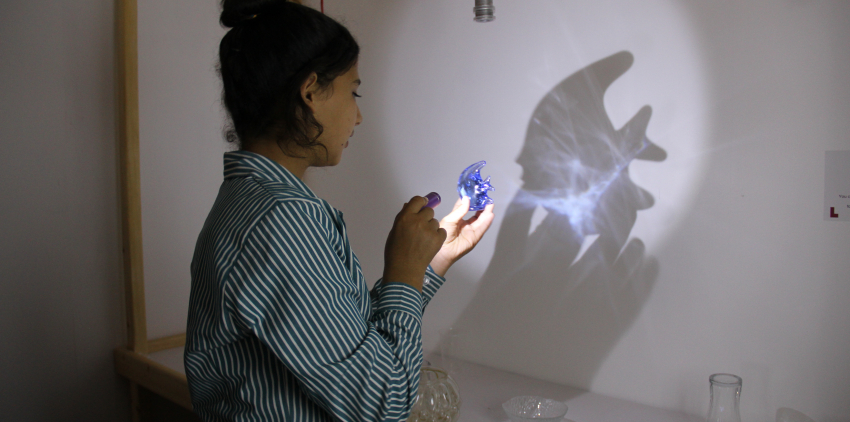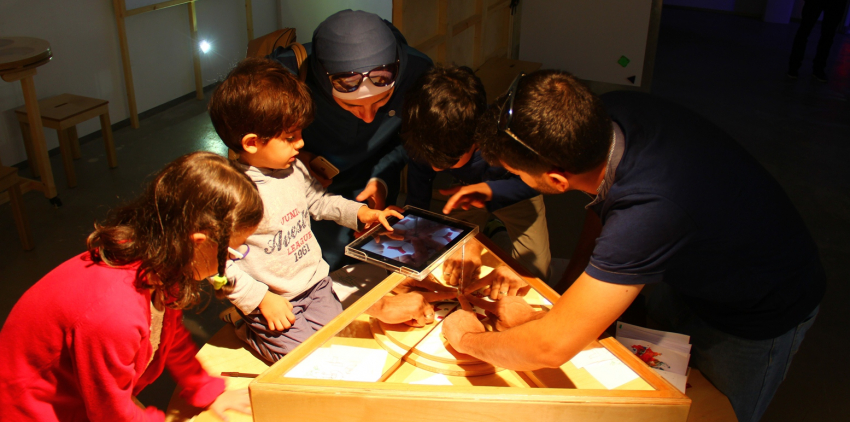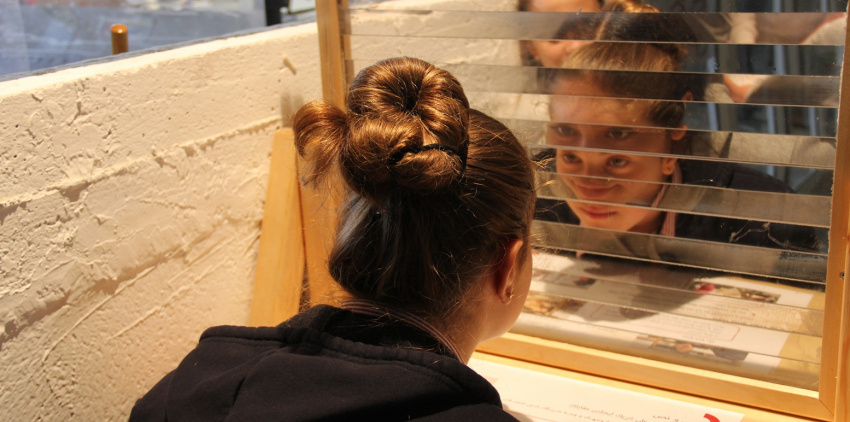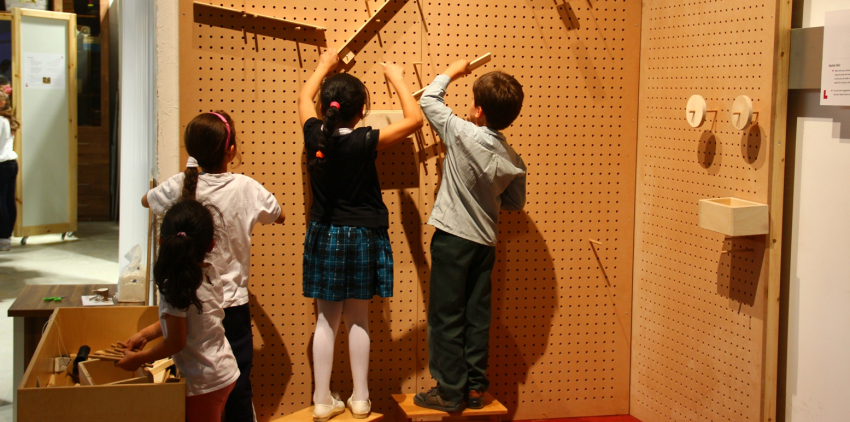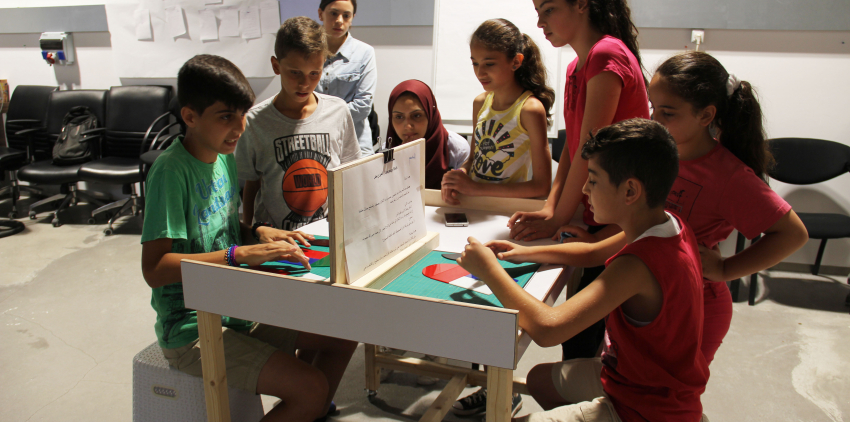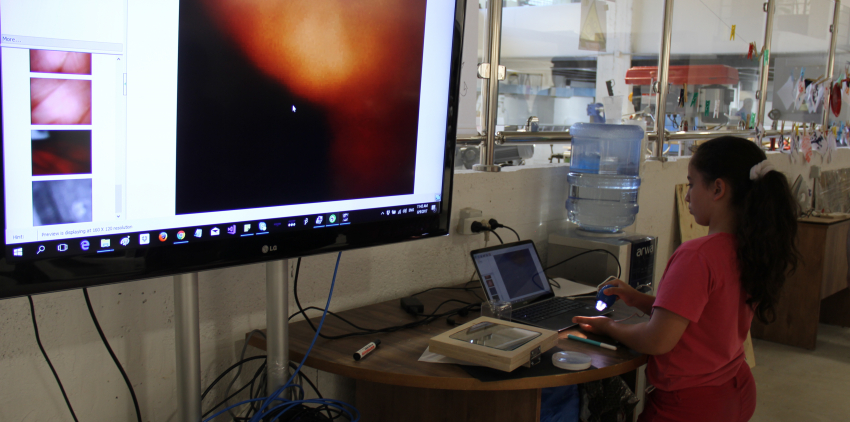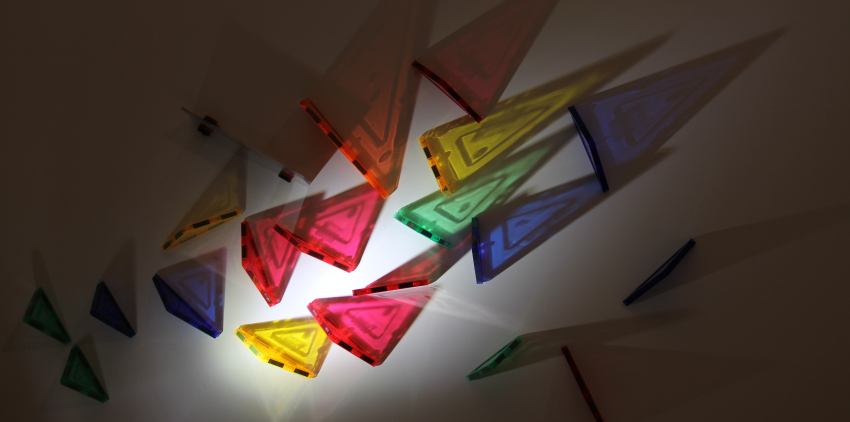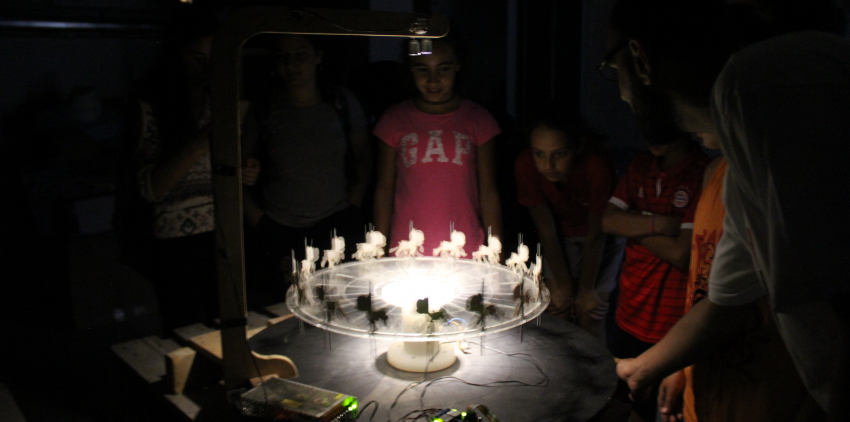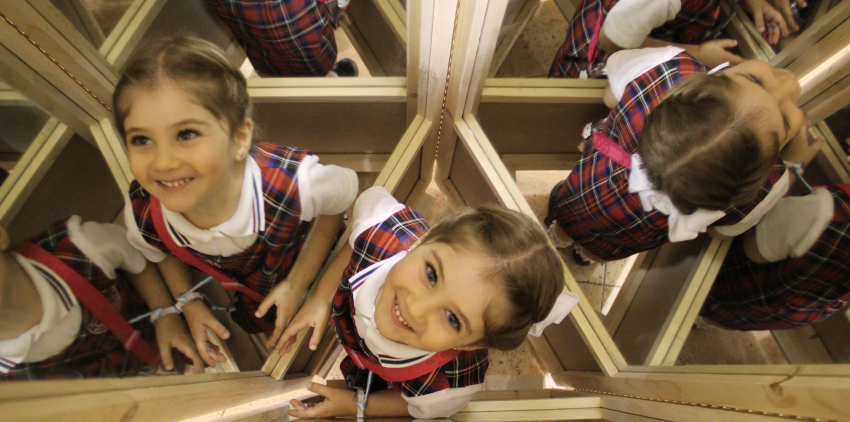
Wall of Mirrors
During preparations for the Science Days
Palestine Festival 2016, we found three
abandoned mirrors. We tried to use them
for a science exhibit. Having developed a
prototype, we added two more mirrors so
that all five form a pentagonal shape. In
the mirrors, the number of images changes
based on the angle between them.
We used the exhibit in festivals and kindergartens.
Every time, we evaluate the
exhibit based on how the public interact
with it and on our observations.

